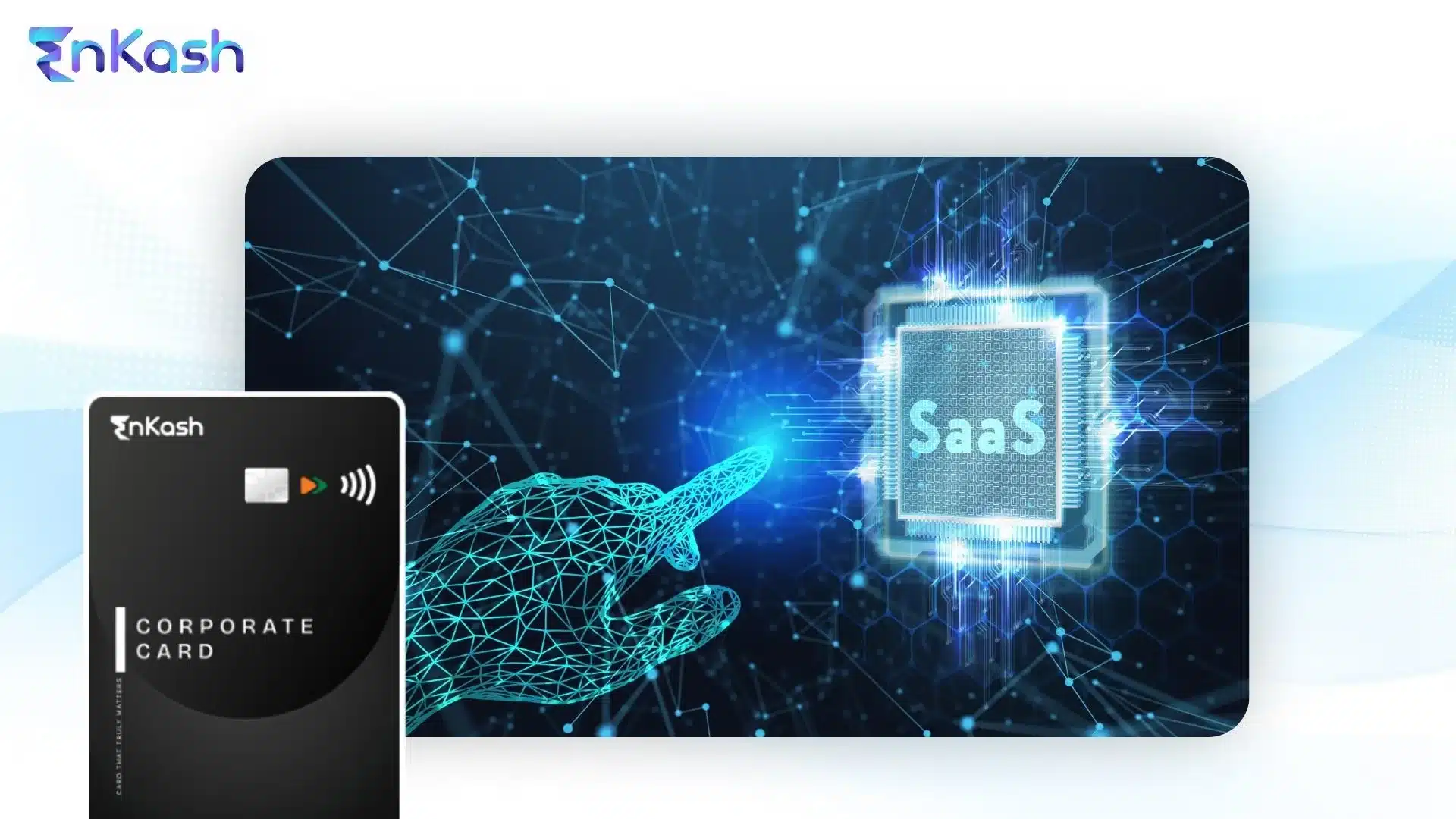Software companies run on subscriptions. Hosting, analytics, CI tools, CRM systems, ad platforms, design suites, testing software – the list runs long. Each one charges on its own schedule. That steady stream keeps the business moving, but it also piles up clutter. Bills hit at odd times. Vendors shuffle their pricing tiers sometimes. Free trials quietly flip to paid plans. A single corporate card ends up carrying the weight of everything, while finance is left digging through line items and asking teams who approved what. That’s why prepaid SaaS card and purpose-built corporate cards are catching on. The idea isn’t complicated. You load a card, hand it to a team or tie it to one tool, put a cap on spending, and watch payments happen in real time. But the real difference shows up in practice. Costs become easier to control, approvals stop dragging, renewals don’t sneak by, and audits take less time. Month-end goes faster, too.
This guide will show how SaaS companies roll out prepaid solutions without creating new chaos. Stay tuned!
What Are Corporate Prepaid SaaS Cards?
Corporate prepaid cards are pretty simple. A business loads money onto them first, and then employees use the balance for work expenses. There’s no credit line sitting behind the card, so no debt and no interest to worry about. You can only spend what’s already been added. In that sense, they behave a bit like debit cards, but they’re set up for company use, not personal banking.
Take SaaS companies, for example. These cards get nicknamed “SaaS cards” because so much of the spending is on subscriptions for tools, software, online platforms, etc. A few fintech firms even rolled out cards built just for this. The pitch was that managers could see which teams were using which services, set rules on vendors, and shut off apps that no one touched anymore.
The cards have two types. A physical card works at a store or for in-person payments. A virtual card lives only online, with a number, expiry date, and CVV, just like a regular card, but no plastic. SaaS teams lean on the virtual version since most of their purchases are online anyway. They typically run on Visa, Mastercard, and other major networks, so acceptance isn’t really an issue for SaaS payments.
What makes them useful is flexibility. A company can hand out different Corporate SaaS Cards to different teams, load each with a budget, and even reload when needed. Some cards have spending caps, others are tied to certain vendors. In practice, it gives founders and finance leads a straightforward way to see where money is going and to keep control.
Read more: Physical vs Virtual Prepaid Cards: Which Is Right for Your Business?
The Expense Management Challenges in SaaS Companies
The quick rise of prepaid SaaS cards isn’t random. It ties back to the headaches most startups and small businesses face when trying to keep spending under control. Traditional expense management looks fine on paper, but in reality, it becomes messy the moment a company starts to scale.
Subscription Sprawl and Hidden Costs
Ask any finance manager and they’ll tell you that tracking software subscriptions is a nightmare. One team signs up for a tool, another team signs up for a similar one, and suddenly you’re paying twice for the same service. Some renew automatically, some get forgotten. This “SaaS sprawl” adds up fast, with money leaving the account for tools no one even remembers using. Without a central view, subscriptions slip through the cracks. silently eats into the budget.
Slow Approvals and Reimbursements
A lot of companies still run expenses through personal cards or one shared corporate card. Employees buy what they need, file a report, then wait. Weeks later, maybe, they get their money back. Meanwhile, the finance team drowns in receipts and spreadsheets. For SaaS companies where every hour counts, this kind of back-and-forth feels outdated and unnecessarily painful.
No Real-Time Visibility
Another common problem is that spending data usually surfaces only at the end of the month. By then, it’s too late to stop mistakes. An annual plan might have been purchased by accident, or a vendor may have quietly bumped up their fees. That money is gone before anyone notices. For startups and new businesses, every penny matters. They can’t afford to be caught off guard like that.
Security and Control Gaps
If you think practically, relying on a single company card for everything is risky. If that card number is stolen, you are forced to cancel it. This means you need to update payment details for every subscription linked to it. Try to imagine the disruption this would cause. On top of that, without built-in limits, there’s nothing stopping someone from charging outside policy or even mixing in personal expenses. It’s not always malicious, but without controls, mistakes just happen.
Controlling and Tracking Expenses with Prepaid Cards
Prepaid corporate cards give SaaS companies much tighter control over expenses. Instead of waiting until the end of the month to see what’s been spent, you decide the limits in advance. That changes how finance teams work day to day.
Set Budgets and Limits
Each card can be tied to a specific team, project, or even one employee. You load the amount, and once that limit is hit, the card simply won’t process another transaction. It’s a straightforward way to stop overspending and to keep budgets realistic.
Real-Time Tracking
Every swipe or online payment shows up immediately on the dashboard. You don’t have to wait for statements or receipts. A manager can see who paid which vendor, when it happened, and for how much. If something feels off, you can step in right away instead of discovering the issue weeks later.
Easier Reporting and Reconciliation
Because every transaction is logged automatically, you get clean records with the time, category, and vendor already attached. No chasing people for receipts. Many prepaid systems also connect directly with accounting software, which cuts down on errors and makes month-end closing less of a scramble.
No More Reimbursement Hassles
Employees don’t need to use their own cards anymore. They just use the company card, and the expense is tracked instantly. That means no waiting for reimbursements and no thick stack of reports for finance to process. It’s smoother for staff and far less administrative work for the back office.
Vendor and Category Controls
You can decide where each card can and can’t be used. Maybe it only works with approved software vendors, or only for travel bookings. Some platforms even let you set time restrictions so that cards are inactive outside of work hours. These controls turn expense policies into built-in protections.
Read more: Best Prepaid, Reloadable & Expense-Friendly Options Explained
Streamlining Recurring SaaS Payments with Virtual Cards
For SaaS companies, keeping records of subscription expenses can (most of the time) feel like trying to fix holes in a bucket. Hosting fees, CRM platforms, and team apps don’t look like much on their own, but together they stack into dozens of charges every month. Prepaid virtual cards have become a practical way to keep that pile of payments under control.
Dedicated Cards for Each Subscription
Instead of running every tool through one corporate card, it’s smarter to split them up. You assign one prepaid card to each service, maybe AWS on one, Google Workspace on another, Salesforce on its own. Suddenly, your billing trail is clearer. If you need to cut a tool, you just deactivate its card. If a vendor suffers a security breach, only that card is exposed. It’s a small change that gives finance teams peace of mind and a cleaner budget view.
No More Surprise Renewals
Free trials are tricky. They start off looking harmless, but if you forget about them, auto-renewal can bite into your budget. With prepaid virtual cards, you can load just enough for the trial period or set the card to expire when it ends. If the vendor tries to charge after that, the payment simply doesn’t go through. You can also set reminders a week before renewal, so the decision to keep or cancel is in your hands, not hidden in fine print.
Prevent Late or Failed Payments
Missing a subscription payment is not just embarrassing. It can disrupt important work. Corporate SaaS Cards solve this with auto top-ups. Say a cloud service tool costs ₹5,000 each month. You load that exact amount before billing day, and the card handles payment on schedule. You face no overdraft risks, no missed renewals, and no scrambling to fix outages the team didn’t see coming.
Protection Against Overcharges and Fraud
When dozens of vendors share one company card, it’s easy to miss a price jump or a stray fee. Giving each vendor its own prepaid card resolves the issue. You set the limit, and the card refuses anything higher. If fraud ever happens, only that single card is at risk, while the company’s main account stays untouched. This gives companies a tighter grip on spending and fewer surprises.
Clear Oversight of All Subscriptions
The biggest advantage is that all those prepaid cards live inside one dashboard. Finance teams don’t need to chase scattered statements or guess what’s being billed anymore. They can pull it up and instantly see every subscription sitting there – which subscriptions are active, where two teams are paying for the same tool, and which logins haven’t been touched in ages. Once you spot the overlap, it’s easy to shut down the extras. That not only saves cash but also clears out the clutter, making the company’s software stack a lot less messy.
Enhanced Security and Policy Compliance
For SaaS businesses, handling money safely is a big deal. One single mistake can lead to bigger problems you don’t want to imagine. Prepaid corporate cards help here by adding layers of control. They lower fraud risk, make policies easier to follow, and keep spending tied to real cash.
Limited Exposure
A prepaid SaaS card can only hold the amount you load onto it. If details are stolen, the loss stops there. With credit cards, the limits are usually much higher, and debit cards connect straight to the bank. That’s riskier. Ramp explains that prepaid cards cap exposure, so even if one card is misused, the rest of your funds stay safe.
Quick Freeze and Replace
If a card is lost or shows a suspicious charge, it can be frozen right away. One click in the app and it’s blocked. Since companies can issue many cards, freezing one doesn’t affect the rest. Virtual cards add another layer. You can make them for single vendors or one-time use. Even if the details leak, the card won’t work again.
Policy Enforcement Without Hassle
Expense policies are tricky to stick to in practice. Prepaid cards help because the rules are set right into the card itself. A company can place limits on how much is spent, block certain vendors, or even cap daily usage. If someone steps outside those rules, the payment just doesn’t go through. It’s a simple safeguard that keeps employees on track without finance teams constantly sending reminders about what’s allowed and what isn’t.
Safer Online Spending
SaaS companies pay for plenty of things online, such as cloud services, tools, subscriptions, and others. Using prepaid cards is safer than using a debit card tied to a bank. Prepaid cards do not give direct access to business accounts. So even if a vendor is hacked, attackers can’t drain company funds. Cards can also be locked to specific vendors, stopping misuse on other sites.
No Debt, No Credit Impact
With a Corporate SaaS Card, you can only spend what’s already there. Once the balance runs out, that’s it. No surprise bills waiting later, no interest sneaking up, and nothing that could hurt your credit score because you forgot a payment. Of course, prepaid cards won’t help build credit history, but they also don’t put your credit score at risk. But for a young startup, the bigger concern is usually staying inside the money they actually have. It is a safer way to keep the business from slipping into debt before it even finds its footing.
Clear Records for Audits
Every time someone uses a prepaid card, the details get stored. This includes who made the purchase, how much it was, where it happened, and the date. That makes audits less of a hassle. It also gives finance teams or investors a clear view of spending.
Read more: Make Secure Online Payments with Free Virtual Cards
Benefits of SaaS Prepaid Cards for Businesses
If you’re running a startup or a growing company, managing software expenses can get messy fast. Prepaid corporate cards fix a lot of those headaches. Here’s how they actually help:
1. Spending Limits That Stick
You set the budget before the card goes out. Teams or tools can only use what’s loaded, nothing more. It stops surprise bills and forces financial discipline without anyone having to chase after receipts.
2. Clear View of Every Transaction
All purchases land on a dashboard right away. You don’t need to wait until month-end to see where the money went. If something looks odd, you can spot it and fix it on the spot.
3. Cleaner SaaS Management
Every subscription gets its own virtual card. Need to cancel one tool? Just kill the card. It won’t mess with the rest. Payments keep running smoothly, and renewals don’t slip through the cracks.
4. No More Reimbursement
Employees do not have to swipe their personal cards anymore. With company cards in their hands, there is no waiting for repayment or fighting over receipts. Finance saves time, and employees aren’t left bearing the burden.
5. Accounting That Doesn’t Drag
Each expense is logged and sorted automatically. Many cards let you attach receipts too. When reconciliation time comes, it’s faster and way less error-prone. Audits are easier, and accounting systems can pull data straight in.
6. Teams Spend Smarter and Faster
Give departments reloadable cards, and they can buy what they need, when they need it. That means less waiting for approvals. But since limits are baked in, there’s still control. Speed plus accountability.
7. Safer Than Sharing a Single Card
Instead of passing around one company credit card (risky and messy), each team or employee gets their own. If one card is hacked, you just freeze it. Since balances are capped, losses stay small.
8. Policies Built Right In
You can set categories, time windows, and spend caps in advance. The card blocks anything outside those rules automatically. Employees don’t have to second-guess the policy, and managers don’t have to police it.
9. Better Handle on Cash Flow
Because these cards are prepaid, you can’t overspend. It forces you to plan loads in line with real cash flow. And since they aren’t credit-based, there’s no interest piling up in the background.
10. Stronger Position With Vendors
With a clear view of how much you’re paying each SaaS provider, you can cut duplicates or ask for discounts. Some companies realize they’re paying for two tools that do the same thing. So, it becomes easy to consolidate.
Conclusion
SaaS companies run on subscriptions. New tools get added all the time, teams are scattered, and if spending isn’t tracked closely, costs spiral. Credit cards were never really built for this world.
That’s where corporate SaaS cards and prepaid cards come in. They let you separate vendors, stick to budgets, and see what’s happening in real time. You can have a card that handles only subscription renewals, or reloadable cards that teams use for their own tools. Either way, it makes expense management less about chasing after mistakes and more about staying ahead.
The takeaway is pretty clear. Prepaid SaaS cards aren’t just another way to pay. They’re a system for control. For SaaS companies that want to grow without burning cash, they’re no longer optional. They’re part of the plan.








